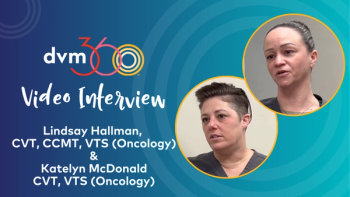
A wink, a smile, a nod: Using body language
Wish you could get inside clients' heads? You can by paying closer attention to their silent statements. Here's how.
Greg PaprockiWouldn't it be wonderful if you could read clients' minds? Then you'd know why they refused a certain treatment or failed to comply with the recommended at-home care. You'd be able to help clients keep their pets healthier, and you'd make your job more enjoyable and your practice more successful to boot.
Believe it or not, it's possible to learn clients' thoughts without even talking to them. (Pssst. It's possible to do the same with co-workers, too.) How? By paying attention to their body language, which is the gestures and expressions that make up the unspoken portion of your interactions. For example, if a client says she gave the medication every day, but she's blinking rapidly, crossing her arms, and tapping her foot, she might be fibbing. By analyzing her body language, you can get at the truth—and reinforce the importance of administering the antibiotic.
Before you dismiss this idea, listen to this statistic: Just 14 percent of communication is through words, and 7 percent is through intonation. The other 79 percent is body language. Think about it. We watch physical signs in pets. We know what it means when dogs tuck their tails between their legs or roll over on their backs and put their paws in the air.
So the old saying that actions speak louder than words turns out to be true. As a result, the ability to control your own body language and interpret the bodily signs of others is what separates the men from the boys and the women from the girls. That skill, which allows you to effectively communicate, will get you moving on up the pay scale and net you a management position, if that's what you want. When you master the art of when to make eye contact or when to touch your face, you'll be able to get your message across, receive positive feedback, influence situations, and read other people's emotional currents—even when words aren't exchanged.
Even though body language involves spontaneous reactions, controlling and reading it aren't talents that come naturally. You must work at it.
Shawn McVeyShawn McVey, MA, MSW, is a member of the Firstline and Veterinary Economics Editorial Advisory Boards and CEO of Innovative Veterinary Management Solutions in Phoenix. Send questions or comments to
Newsletter
From exam room tips to practice management insights, get trusted veterinary news delivered straight to your inbox—subscribe to dvm360.




